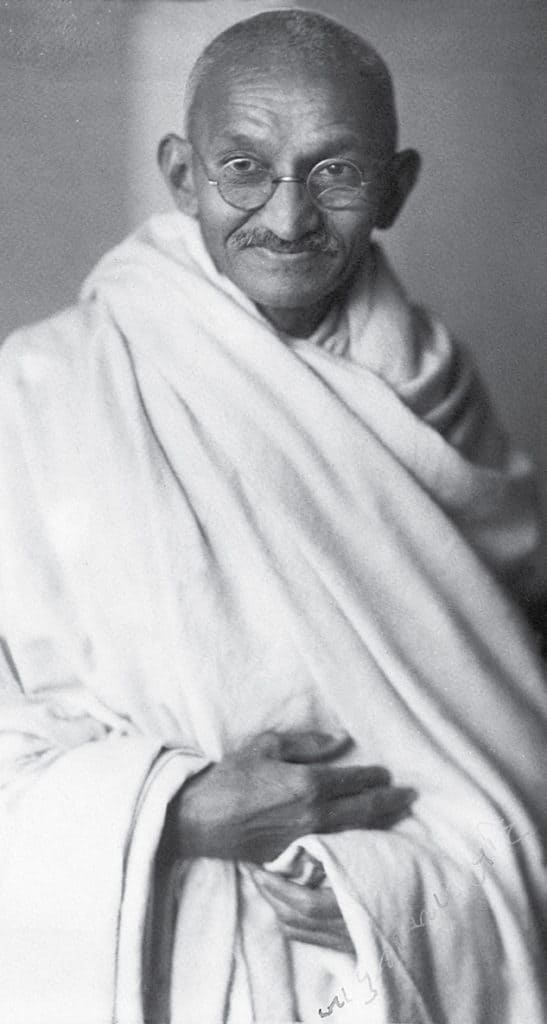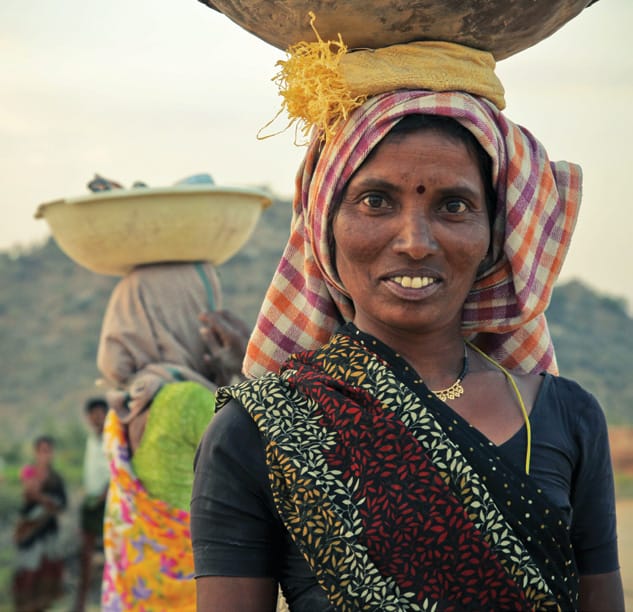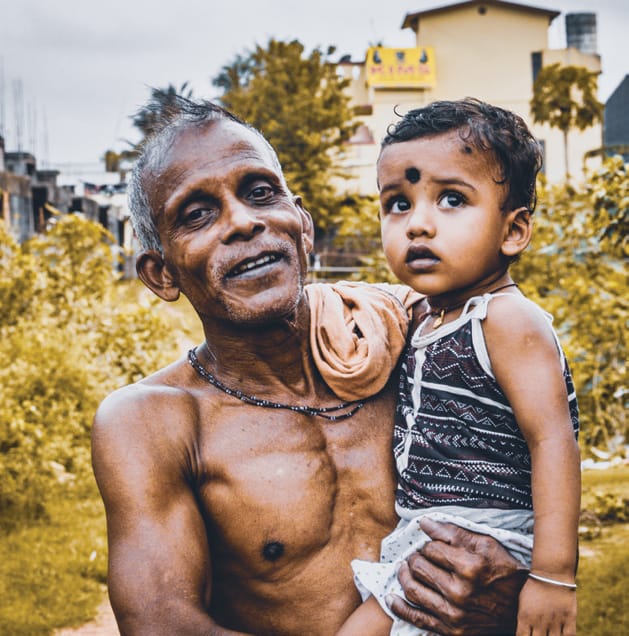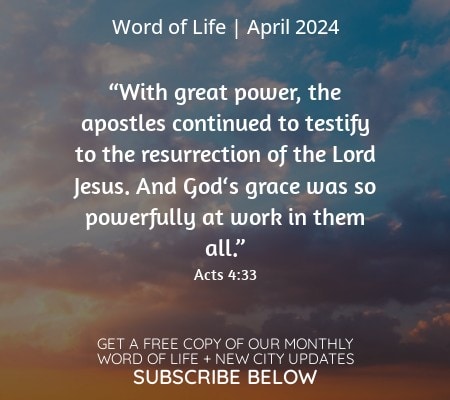“Where is Bapu?”[2] I’ll never forget this question posed by a little girl to her parents and grandparents during a visit to the ashram, a retreat center in Sabarmati, Ahmedabad in the state of Gujarat. It was 1983 and the city of Porbandar, the birthplace of Mahatma Gandhi, was coming out of months of tensions between Hindus and Muslims.
This question has accompanied my 28 years of life in India, and it continues to do so every time I return to that subcontinent.

It resurfaced the day after Gandhi’s 150th birthday last year when I came across an absurd piece of news. Prime Minister Narendra Modi was paying his respects before Gandhi’s statue in New Delhi while many cities were holding marches, religious rites, or conventions in his honor. But in the central state of Madhya Pradesh, some men had entered undetected into one of the many government offices and, after scribbling “traitor” over Gandhi’s photo, had stolen a bit of his ashes from a little urn.
Actually, Bapu — an affectionate term for “Daddy” — is present everywhere: no city or Indian citizen lacks a main street named Mahatma Gandhi Road; his face is imprinted on every rupee bill; his pictures hang in offices and schools and his statues are ubiquitous.
His presence can also be found in various parts of the world. His books in libraries with successive editions speak of the constant and often renewed interest in the great principles of his existence: satyagraha (faithfulness to the truth), swaraj (the ability and right of every people to govern itself), but above all, ahimsa (non-violence).
These very principles have been championed several times in the history of humanity. Martin Luther King Jr., Nelson Mandela, Desmond Tutu, Aung San Suu Kyi, and others have been promoters of non-violent revolutions that in one way or another have been inspired by Gandhi, the Great Soul.
Yet that question remains.
Where is Bapu?
These past months, he accompanied me in my travels throughout the subcontinent, as we approached his 150th birthday on October 2, 2019. I was looking for the significance of Gandhi and his ideals in India today. We naturally had to start from the Birla House in New Delhi, where he spent his last 144 days and where he died in the late afternoon of January 30, 1948.

There the silence speaks straight to your heart. You can read the words he spoke and wrote. You can tread the very path he took toward his martyrdom. They are soberly but effectively marked by footprints that trace the short stretch between his room and the place where he was shot by Nathuram Vinayak Godse.
At the entrance, an elderly man crouched on the ground spins yarn on the spinning wheel, the famous charka, so dear to the Mahatma. You can stop and watch him. The invitation is often extended to get closer to see how the loom works. Weaving was a fundamental moment in Gandhi’s daily life, as he spent hours concentrated on his spinning.
Then a silent walk takes you to where Gandhi fell: from the dry shots of a pistol and those words, Hey Ram, “Oh God,” to the samadhi (final consummation) of the Mahatma along the Yamuna River, where he was cremated on a funeral pyre. Those were words he often said, and they remain the last ones uttered by his mouth. In intense moments of silence, you walk barefoot on the grass, as a necessary sign of respect for this piece of land rendered sacred by his sacrifice.
The visit ends inside his house, with pictures, phrases, speeches, and impressions from world authorities. Most of all, you can see the austere sobriety and essentiality of the two rooms where he worked and lived: a desk and two pairs of typically Indian sandals in one room, and in the adjacent one, a bed and a wooden board.
At the Birla House, the profoundly intense spiritual experience is well encapsulated by a phrase you can read in his room, “My life is my message.” It is a strong challenge for anyone; Gandhi has never left anyone indifferent. He is one of the protagonists of the 20th century, one of those unique figures destined to remain in history.
And what is the meaning of his message today?
At the heart of this country in great evolution, he took the lead role in dizzying economic growth that lasted a decade and spread ideologies that led to his assassination. The political party of Prime Minister Modi, the Bharatiya Janata Party, lives off of the ideology of Hindutva — India for the Hindus — which triggered the shot that killed Gandhi.

Gandhi’s life remains difficult to synthesize and define. He himself, a little before dying, courageously affirmed: “Once these eyes are shut forever and my body set to flame, there will be all the time to pronounce a verdict on my work.”
In a way, it’s striking to witness today the great contradiction within this nation, which 70 years after his death, seems to almost mock the ideals of its Mahatma, while on the other hand, continues to follow him in an almost mysterious way.
This is also what emerges from a conversation with Vinu Aram, daughter of staunch supporters of the Mahatma and the current director of the community of Shanti Ashram, founded by her father in Coimbatore, three hours flight from Delhi in the deep south of India. Here everything is inspired by Gandhian ideals.
In fact, to find Bapu, you need to find him where he continues to live in a different way — through his ideals that have taken shape in response to the frenzied globalization and technology of the 21st century.
“Gandhi belongs to the people,” Aram tells me. “He worked and lived for the progress not only of the Indian people, but also of men and women of the world.”
This takes me back to the little girl in Ahmedabad in 1983. “Gandhi remains true even today. When a boy looks at his picture or hears his words, in some way, he is reconnected to Gandhi. It is mysterious but real.”
True enough, Gandhi was a multifaceted and controversial figure — and continues to be so. Various institutions, where Gandhi remains the fundamental point of reference, witness to the need to make the Gandhian commitment rooted in one’s culture, avoiding the pitfalls of exclusivity. It is necessary to maintain the windows of one’s home open to the outside world, as Gandhi often used to say.
Shanti Ashram is one of those laboratories where one works for the good of all, and where through the educational process, microfinance, and the promotion of women, it is possible to achieve autonomy and self-governance in today’s world.
In particular, one lives in a deep spirit of respect for the different religions and cultures in the spirit of ahimsa.
Over the years, I have met many Gandhians, now elderly; but the answer to that little girl’s question is that Bapu is in all those who continue to embody the heart of Indian culture: unity in diversity.
Roberto Catalano
First published in Italian in Città Nuova, Italy
Roberto Catalano is Co-Director of the Focolare’s International Center for Interreligious Dialogue in Rocca di Papa near Rome, Italy.
[1] Literally, “Great Soul”; a title of love and respect in India; commonly refers to Mohandas K. Gandhi (1869–1948)[2] A word for “father” in many Indian languages, and may refer to Mohandas K. Gandhi, officially honored as Bapu (Father) of the Nation of India.




